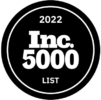- Guest Contributor
- November 23, 2022
Retail giants are cutting back on recruiting seasonal employees as a recession looms–holiday hiring is expected to plunge by nearly 40%. Andrew Challenger, Senior Vice President of executive coaching firm Challenger, Gray & Christmas, spoke to this shift: “Companies may be reluctant to announce their seasonal hiring plans, even if they do intend to hire, due to economic uncertainty. Some may not want or need to make a hiring push right now.”
But consumer demand is subject to change. While the luxury market is forecasted to grow among ultra-wealthy individuals with disposable income, the average consumer has weathered higher prices for gas, groceries, and everyday services; one in five will spend less this season because of a changed economic situation.
In this challenging hiring climate, retailers should be poised to hire quickly and focus on retaining retail employees and temporary staff. A thoughtful retail employee onboarding process equals a better customer experience and reduced employee turnover. Read on to learn how to onboard retail workers fast.
How to onboard retail workers fast
How do you effectively onboard an employee? According to the Society for Human Resource Management, half of all hourly workers leave new jobs within the first 120 days. They recommend implementing a formal onboarding process to mitigate turnover.
Formal onboarding is a written set of coordinated policies and procedures that assist an employee in adjusting to their new job in terms of both tasks and socialization. It takes time to develop a standardized plan but having one will speed up the onboarding process for new retail workers.
Your onboarding plan should cover:
- Technical training – build proficiency in POS system, alongside other tools
- Sales training – address components of the guest experience
- Brand training – cover mission, frequently asked questions, best-selling products
- Organizational training – communicate internal policies and procedures
Consider using a range of mediums to conduct employee training.
- In advance: Utilize virtual training modules to cover what your retail employee needs to know ahead of their first day. Accessibility helps with completion rates–a password-protected format creates barriers and extra steps.
- On the job: Everyone learns differently. Use a variety of different learning assets to accommodate everyone. Consider training videos, on-the-job demonstrations, and a printed booklet to refer to later.

Retail onboarding best practices
Before diving into our retail employee onboarding checklist, integrate these onboarding best practices to improve employee retention rates.
- Onboard before the rush – Untrained workers on a busy sales floor will be overwhelmed and unable to assist customers.
- Give a warm welcome – Create a sense of belonging from Day One. Personally introduce your new retail employee to their peers. Assemble a welcome kit with company swag, treats, or other small surprises.
- Connect your best people – Implementing a buddy system or staff shadowing is doubly effective: it creates a sense of camaraderie and clarifies behavioral expectations. Set up meetings with key stakeholders and leadership for added connectivity.
- Check-in at 30/60/90-day milestones – Onboarding doesn’t stop after the first week. Most employees take about 90 days to become fully comfortable in their new roles. Periodic check-ins measure their progress. Schedule a designated meeting time to give and receive feedback.
- Look to the future – Your retail employees may not stay in retail forever, but they are certainly thinking about their next steps. Illustrate company career paths and opportunities for continuing education that will enhance their resumes, regardless.
Checklist for onboarding new retail employees
Each retail operation is unique, so decide on an action plan that works for your team & key stakeholders. How do you onboard a new employee checklist? Break it down into steps!
What are the four traditional steps of onboarding? Preboarding, Welcome, Training, and Transition.
Preboarding – Before Day One.
- Paperwork: Gather the employee’s basic information. Fill out forms–including W-4, I-9, non-disclosure agreements, and direct deposit.
- Communication methods: Ensure your new team member knows how, when, and why to communicate with their team members. Do they know who to go to, given a challenging or uncertain situation? Set them up on all communication channels: manager phone numbers, email addresses, and an employee Slack board (if available).
- Welcome email: Include pertinent information– for example, the dress code (or ask for a uniform size), parking information, and a schedule for their first two weeks.
Welcome – First day
- Make it fun!: A positive, memorable experience allows employees to start on the right foot. Buy lunch for the team. Personally introduce the new person to your customers. Give them a fun “welcome kit”.
- Tour the store: Your new employee should know where to find the tools they need, where they can take breaks, and feel comfortable navigating the store independently after their first day.
- Employee handbook: Review policies & procedures together and discuss any questions. Clarify discounts & perks and let the employee know if they can start using them right away!
Role-specific Training – First week
- Introduce daily tasks: Establish how the day-to-day workflow should look. Ideally, new employees shadow their peers or train with a buddy until they have demonstrated they are independently competent.
- Review & set goals: Employees want to do a good job. Clearly define the role and expectations to help them work towards proficiency.
- Daily check-ins: Touch base at the beginning and the end of the day to review the schedule and address any questions. These check-ins can be quick & casual.
Transition to full employee – First three months
- Introduce challenging tasks: As new employees work towards independence, consider assigning project-based tasks to deepen their knowledge of store operations.
- Solicit peer feedback: As a manager, you may not work with new employees as consistently as their peers will. Ask open-ended questions to understand how they are adjusting to their new role.
- Ongoing check-ins: Schedule time for formal check-ins at major milestones: 30, 60, and 90 days. These meetings should happen when both employee and manager are not busy with daily tasks, ideally in a private setting.
Standardizing how to onboard retail workers at your company is an essential part of the guest experience. Think through this process with your management team before the holiday rush begins.
Need retail staff?

About the Author: Meghna Jaradi is a freelance writer and events manager with experience working for the Seattle Times, Kitchen Arts & Letters, Book Larder, Peddler Brewing Company, and more. You can contact her on LinkedIn.









